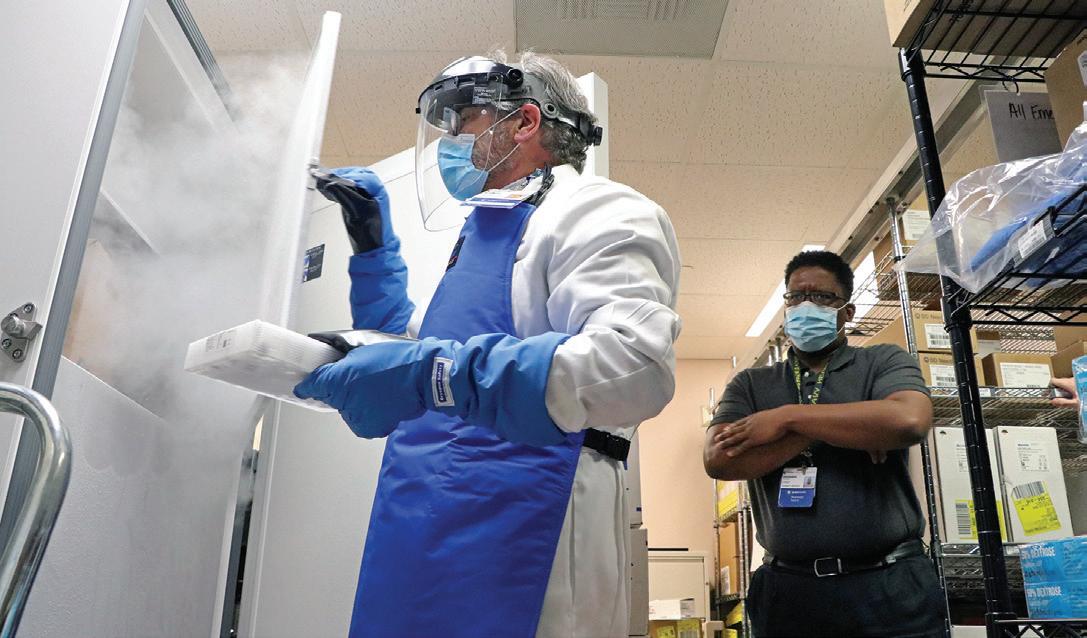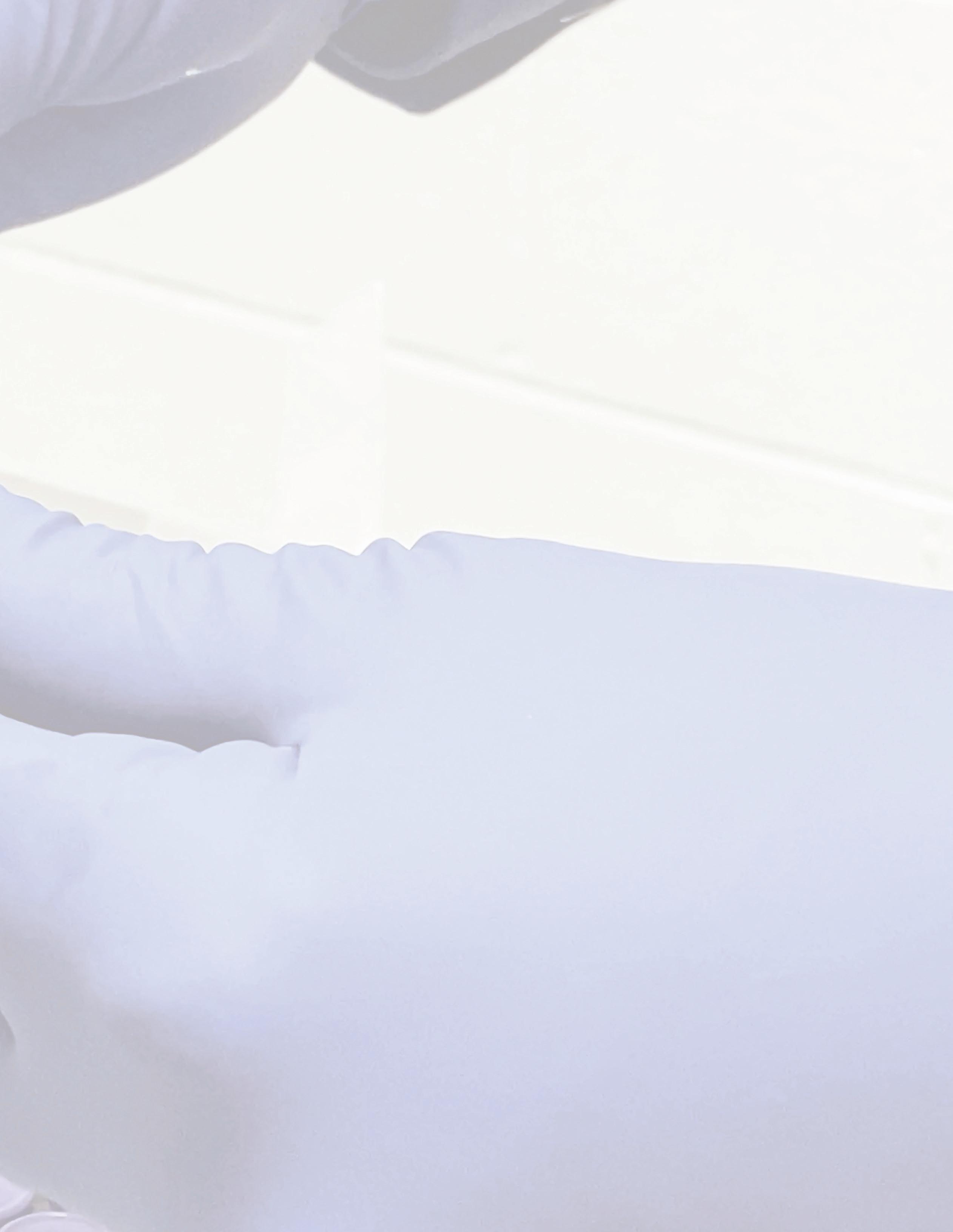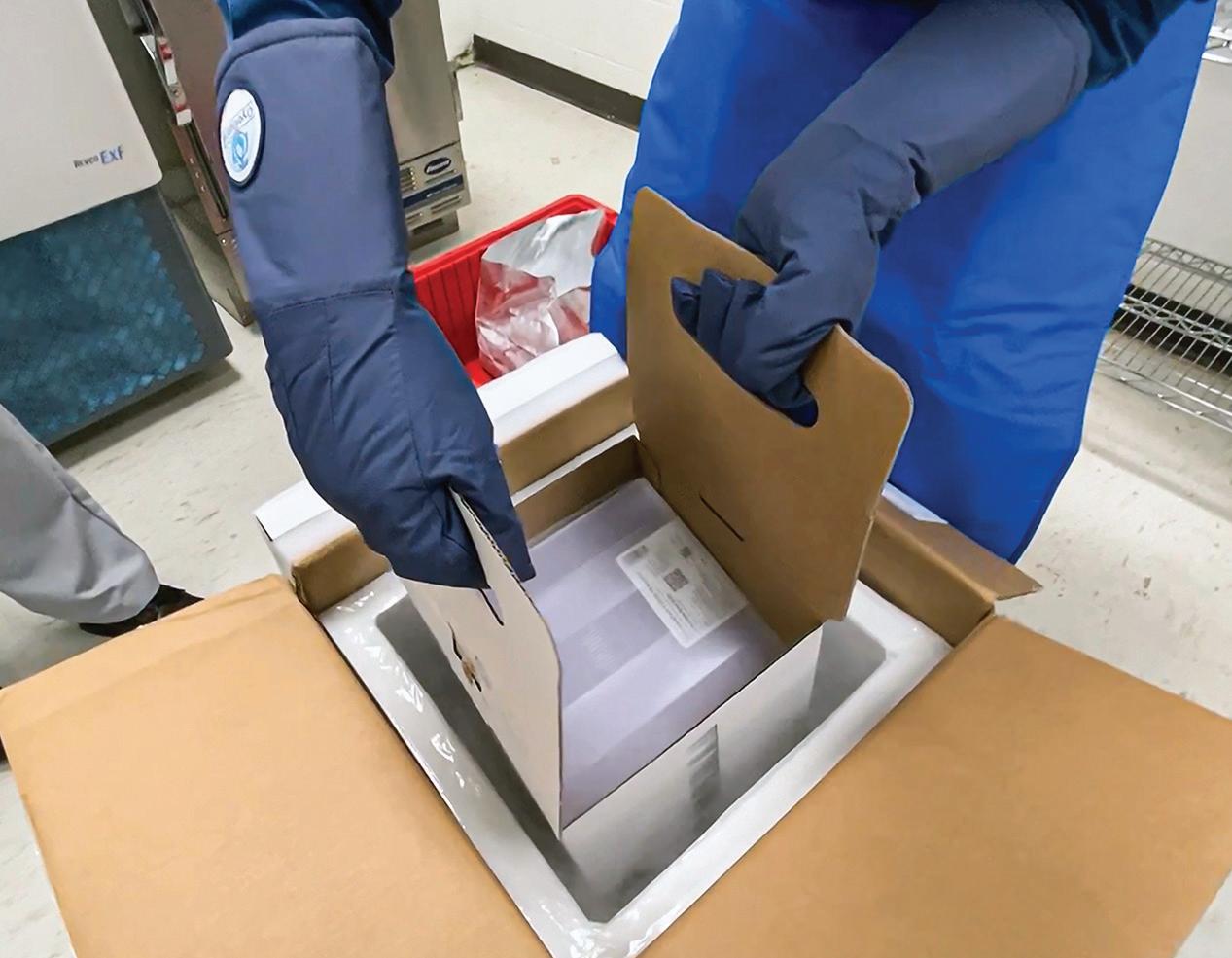
5 minute read
The Road to a COVID-19 Vaccine
How the first 1,086 Duke Health employees got vaccinated
When Faye Williams arrived for her shift on Monday, December 14, she didn’t expect to become part of history.
Williams, who retired after 40 years as a nurse for the Durham VA Health Care System, had been working part-time, screening patients bound for Duke Health appointments for COVID-19 symptoms.
On that December day in 2020, a colleague approached Williams with news that Duke Health would be administering its first doses of the COVID-19 vaccine. She started to ask Williams if she would be interested in one.
“Before she could get it out of her mouth, I said ‘Absolutely, I’ll do it,’” Williams said.
COVID-19 had already robbed Williams, 67, of so much. She longed to hug and spend time with nieces and nephews, sorority sisters, and friends from church.
For Williams, the arrival of the COVID-19 vaccine represented progress toward reclaiming her old life, as it does for all staff and faculty who now have the opportunity to get vaccinated. When Williams walked into the vaccination site in the Searle Center later that day, the television cameras and reporters signaled that hers would be no ordinary vaccination.
Williams was the first Duke Health caregiver to receive the vaccine at Duke, which immunized 1,086 health system employees during the week of December 14.
The vaccine’s journey through Duke, from delivery of the first batch at a hospital loading dock to Williams’ left shoulder, took months of planning, preparation and patience from employees across Duke.

Nursing Program Manager Rita Oakes administers Duke’s first COVID-19 vaccination to Faye Williams on December 14. Photo by Shawn Rocco.
A Freezer Colder Than Antarctica
Last fall, when Duke officials began planning for distribution of the vaccine, there were many unknowns, including which vaccine Duke would receive, when it would arrive and how much Duke would get. That required leaders to draw on experience and intuition and anticipate curveballs.
Jason Zivica, Duke Health’s director of emergency preparedness and business continuity, stayed ahead of a potential challenge when he learned that Pfizer’s vaccine needed storage at minus-70 degrees Celsius, a temperature colder than winter in Antarctica.
“We knew ultra-cold freezers would probably be needed, and that they might end up being hard to find, so we started planning that first thing,” Zivica said.
Duke already had one ultra-cold freezer at Duke University Hospital, but in October, Zivica helped secure three more – two for Duke Regional Hospital and one for Duke Raleigh Hospital. Slightly larger than a standard home refrigerator, the freezers are capable of holding as many as 50,000 doses. And last fall, as national demand for freezers surged, Duke was a step ahead.
“If the vaccine is the light at the end of the tunnel, then we needed to do everything we can to get it out there,” Zivica said.

Daryl Blackburn, Duke Regional Hospital Pharmacy’s assistant director, wears protective eyewear and gloves to store the hospital’s first shipment of the Pfizer/BioNTech COVID-19 vaccine in an ultra-cold freezer. Photo by April Dudash.
Building an Appointment System
With the vaccine in hand, Duke needed a way for employees to schedule an appointment for their first dose.
But before the vaccine appointment website launched, Ramy Sharaf tried to break the system that would serve up to 4,100 Duke Health employees within hours of the site going live.

Duke’s first doses of the Pfizer COVID-19 vaccine were given on December 14 to staff members from Duke University Hospital. Photo by Shawn Rocco.
He submitted appointment requests without required information, tried to schedule multiple appointments and performed dozens of tests to ensure the system worked.
“I’ll never forget doing this work,” said Sharaf, business systems analyst for Duke Employee Occupational Health and Wellness. “This experience expanded my perspective on health care and how to employ technology in ending the pandemic.” Ramy Sharaf
Sharaf was part of a six-person team that developed the online scheduling and record-keeping platforms for Duke’s employee vaccination rollout. He helped vet a dozen scheduling platforms before finding one that had rigorous security, was easy to customize and chose the time, date and location for a vaccination.
With the system handling scores of appointments each week, Sharaf and colleagues continue to test the online backbone of Duke’s vaccination effort.
“We’re all just trying to honestly make a difference in the community and work together,” Sharaf said.

Setting the Stage
Last fall, Rebecca Cray Concha was part of the team tasked with setting up Duke’s COVID-19 vaccine sites. After long days of helping unlock logistical challenges, she felt both exhausted and exhilarated.
“Sometimes I’d get home and I remember that we’re delivering a vaccine in a pandemic,” Concha said. “It’s just kind of wild.”
Starting last October, Concha, Duke University Hospital’s administrative fellow who helped with the employee influenza vaccination effort, worked on setting up the first COVID-19 vaccination site in the Searle Center.
She and her team drew on relationships with Duke’s Employee Occupational Health and Wellness, the Department of Clinical Education & Professional Development, School of Nursing and School of Medicine to find staff to register patients and reconstitute and deliver the COVID-19 vaccine.
Her group found roughly 24 tables and 48 chairs, a backup supply of syringes, and sanitizing wipes, among other supplies. By December, the Searle Center site was ready to deliver its first doses. With other sites to open, Concha’s work was far from done.
“I just feel so lucky to be a part of this moment,” she said.
Ready to Go
Early on December 14, Jordan DeAngelis moved Duke Health’s first shipment of the Pfizer/BioNTech COVID-19 vaccine from a box with dry ice into an ultra-cold freezer.
After months of planning and coordination, Duke staff members were ready to turn this shipment into vaccinations for 1,086 health system employees over the week.
“It was a surreal moment,” said DeAngelis, coordinator of pharmacy procurement and emergency preparedness for Duke University Hospital.
Duke’s first shipment arrived in 585 clear vials – each containing at least five doses – inside a single cardboard box. Later, DeAngelis and a team of nurses prepared the first vaccines for use, inverting vials 20 times, cleaning them with anti-septic wipes and diluting the Jordan DeAngelis lifts Duke’s first allotment of Pfizer/BioNTech vaccine with sodium COVID-19 vaccines out of a cardboard box with dry ice. Photo chloride to ready it by Shawn Rocco. for immunization.
Later that day, as the first dozen Duke employees, led by Faye Williams, received their doses, DeAngelis stood by.
“It was amazing to think three months before, we didn’t know if we’d even have a vaccine in 2020," DeAngelis said. “I was acutely aware that this was a historic and monumental day.”

By Jonathan Black and Stephen Schramm








